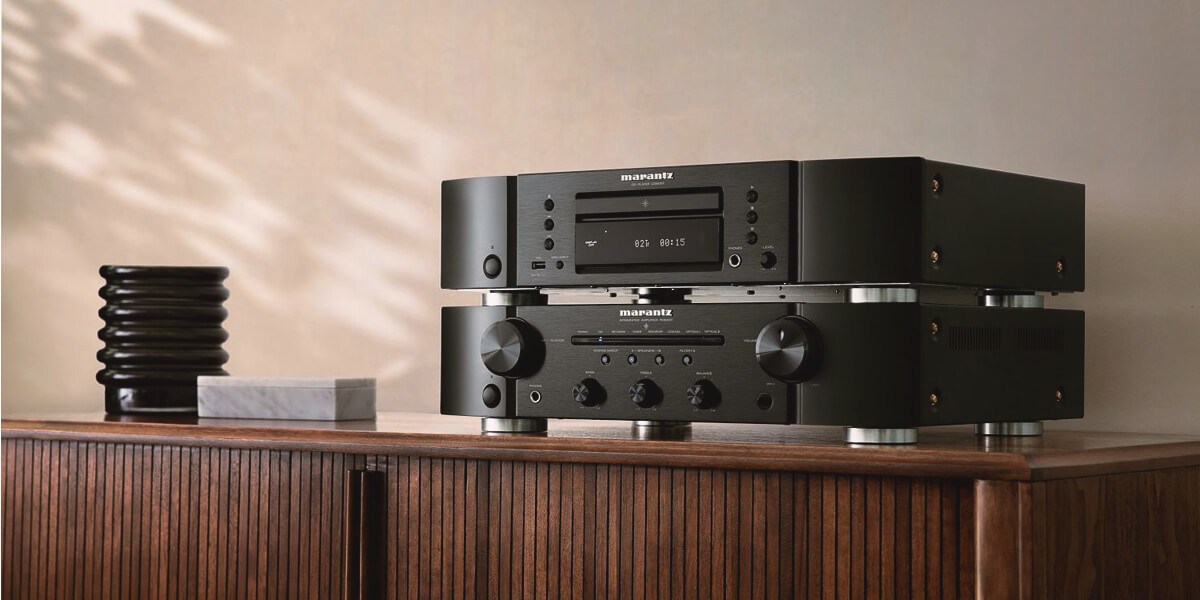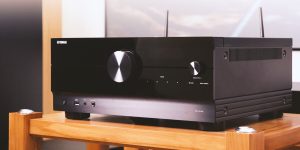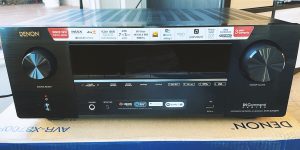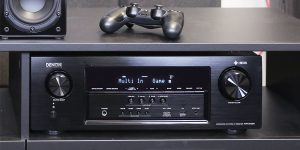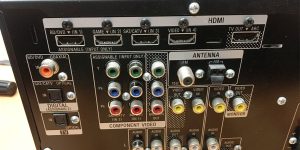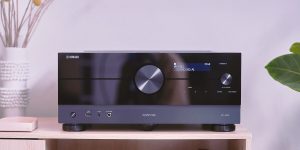Integrated amplifiers and AV receivers are two common audio components used in home entertainment systems. While integrated amplifiers provide high-quality stereo sound and are popular with audiophiles, AV receivers offer a complete solution for multi-channel surround sound systems and home theaters.
In this article, I’ll consider these two systems in detail and give you essential tips for connecting them.
Understanding key components
In the realm of audio equipment, AV receivers, and integrated amplifiers play vital roles in delivering high-quality sound. Understanding their key components and distinguishing between them is essential for audio and home theater enthusiasts alike.
This section provides an insightful overview of the key components found in AV receivers and integrated amplifiers, shedding light on their functionalities and highlighting the differences between these two important devices.

AV receiver
An AV receiver, short for an Audio-Visual receiver, is a central component of a home entertainment system. It serves as a hub for audio and video devices, providing amplification for audio signals, video switching capabilities, and support for various surround sound formats. AV receivers are commonly used in home theater setups and offer a comprehensive solution for multi-channel audio and video needs.
Integrated amplifier
An integrated amplifier combines a preamplifier and a power amplifier into a single unit. It amplifies audio signals from different sources, such as CD players or turntables, and provides connectivity options for speakers. Integrated amplifiers are known for their simplicity, compact size, and high-quality stereo sound reproduction.
Now, I want to show you a table with the difference between AV receivers and integrated amplifiers. Let’s look at it:
| Parameters for Comparison | AV Receiver | Integrated Amplifier |
|---|---|---|
| Functionality | The central hub for audio and video devices | Amplification for audio signals |
| Surround Sound | Supports multi-channel surround sound formats | Focuses on stereo sound reproduction |
| Video Switching | Allows connection and control of multiple video sources | N/A |
| Size | Generally larger in size | Compact and space-efficient |
| Audio Quality | Provides good audio quality with surround sound support | Emphasizes high-quality stereo sound |
| Connectivity Options | Offers various inputs and outputs for audio and video devices | Primarily focuses on audio connectivity |
In summary, an AV receiver is a comprehensive audio-visual hub with support for multi-channel surround sound and video switching capabilities. An integrated amplifier focuses on high-quality stereo sound reproduction and compact size. You can connect these devices with each other. In the next section, we’ll discuss why you should do this.
Why connect an integrated amplifier to an AV receiver?
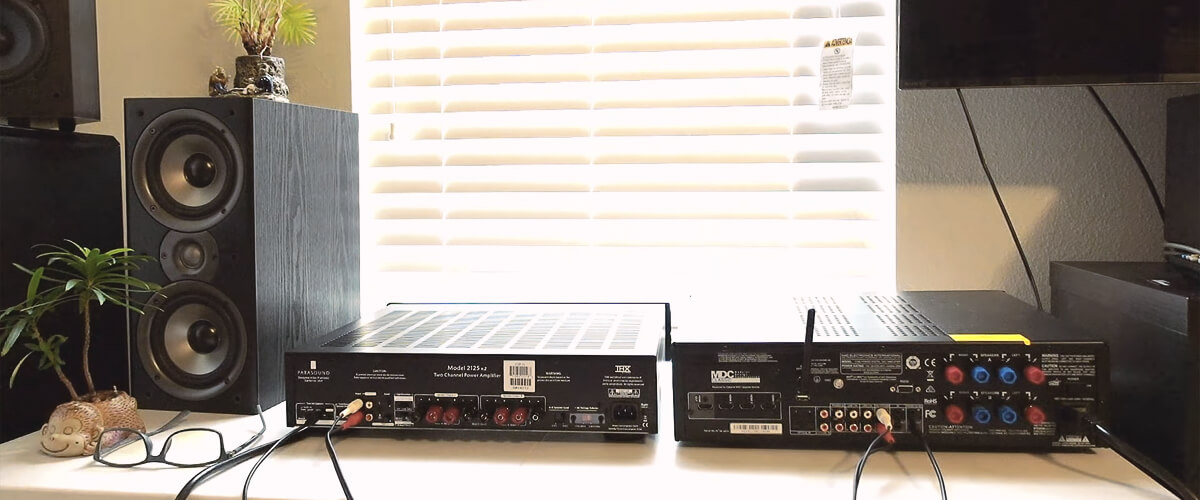
When it comes to creating an exceptional audio-visual experience, the combination of an integrated amplifier and an AV receiver can significantly elevate your system’s performance and capabilities. By connecting these two components, you unlock a multitude of benefits, from enhancing audio quality to expanding system capabilities.
I’ve selected two main reasons why connecting an integrated amplifier to an AV receiver is a smart choice for both audio and home theater enthusiasts. Now, I want to talk about it in more detail.
Enhancing audio quality
When connecting an integrated amplifier to an AV receiver, one of the key benefits is the potential to enhance audio quality. By utilizing the amplification capabilities of the integrated amplifier in conjunction with the processing capabilities of the AV receiver, you can achieve a higher level of audio fidelity and performance.
The integrated amplifier’s dedicated amplification stages can deliver clean and powerful sound reproduction, while the AV receiver’s advanced digital signal processing can optimize the audio signals for a more immersive listening experience. This combination allows for enhanced dynamics, improved clarity, and precise channel balance, resulting in a truly impressive audio quality that elevates your overall entertainment system.
Expanding system capabilities
Connecting an integrated amplifier to an AV receiver opens up new possibilities for expanding your system’s capabilities. The combination allows you to take advantage of the integrated amplifier’s pure audio amplification while utilizing the AV receiver’s advanced features and connectivity options. With an AVR acting as the central hub, you can seamlessly integrate additional audio and video components, such as gaming consoles, streaming devices, or Blu-ray players, into your system. This integration expands your system’s functionality, giving you more control, flexibility, and the ability to enjoy a wider range of entertainment options with enhanced audio performance.
Step-by-step guide: connecting your integrated amplifier to your av receiver
I’ve prepared step-by-step instructions that will help you seamlessly integrate both components and unlock the full potential of your audio-visual setup.
Before you begin, ensure that both the integrated amplifier and AV receiver are powered off and unplugged from the electrical outlet.
| Step | Instructions |
|---|---|
| 1. | Locate the pre-out or preamp output terminals on the AV receiver. |
| 2. | Connect RCA cables from the pre-out terminals of the AV receiver to the line-in or input terminals on the integrated amplifier. |
| 3. | Verify that the connections are secure and properly seated. |
| 4. | Power on both the AV receiver and the integrated amplifier. |
| 5. | Set the AV receiver’s audio output settings to use the external amplifier or preamp output. |
| 6. | Adjust the volume and audio settings on the integrated amplifier to achieve the desired sound levels. |
| 7. | Test the audio by playing your favorite content and adjusting settings as necessary. |
After completing these steps, you have successfully connected your integrated amplifier to your AV receiver. Enjoy the enhanced audio quality, expanded system capabilities, and immersive entertainment experience that your combined setup now offers.
Thus, in this article, I’ve talked about integrated amplifiers and AV receivers, as well as the difference between them. Also, we’ve considered how to connect an integrated amplifier to an AV receiver. I hope that my recommendations will help you deal with these devices, correctly connect them, and dive into the world of surround and high-quality sound.
